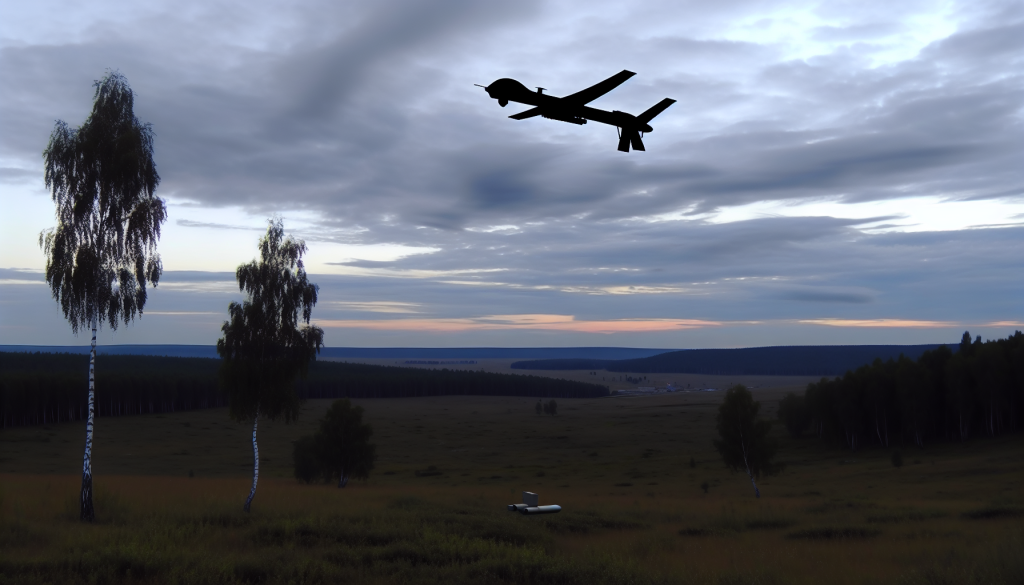Escalation in the Ukraine Conflict: September 2023 Overview
September 2023 marked a significant escalation in the ongoing conflict between Russia and Ukraine. An analysis conducted by AFP revealed a sharp increase in long-range missile and drone strikes, underscoring the intensified military actions from Moscow. This surge in hostilities occurred against the backdrop of stalled peace negotiations and fresh allegations of Russian airspace violations across Europe.
Increased Attacks on Ukraine
Throughout September, Russia launched an astonishing 5,638 long-range drones and 185 missiles—a staggering 36% increase compared to August’s figures. These aggressive tactics highlight a renewed focus on military offensives, especially as diplomatic talks appeared to falter. Prior to the August 15 summit between Russian President Vladimir Putin and U.S. President Donald Trump, Moscow had temporarily toned down its military operations, but the cooling off period did not yield any fruitful discussions. The Kremlin subsequently declared that peace talks with Ukraine were “on pause” while committing to ramp up its military actions.
Largest Aerial Bombardment Yet
September also witnessed Russia’s largest aerial bombardment of the war to date. On the night of September 6-7, the country launched 810 drones at Ukraine, marking a notable increase in the scale of their attacks. This particular assault bore significant consequences, as it struck a Ukrainian government building in the heart of Kyiv—the first time such a critical target had been bombed since the invasion began in February 2022. The relentless barrage of missile and drone strikes underscores a grim reality for Kyiv and its citizens.
Air Defense Responses
As the volume of attacks soared, Ukraine’s Air Force ramped up its defenses to counter the threats. Initial estimates indicated that the Air Force successfully shot down or intercepted an impressive 87% of the Russian drones and 68% of the missiles. This showcases Ukraine’s resilience and capability to adapt to the evolving battlefield dynamics. Moreover, since May 10, Russia has carried out nightly drone strikes, a consistent pattern following a brief three-day “truce” that coincided with a military parade in Moscow.
To combat these persistent threats, Ukraine has employed a blend of mobile air defense systems, electronic jammers, and newly acquired interceptor drones. This multi-faceted approach aims to bolster their defensive measures amidst ongoing aggressions.
NATO’s Reaction and Support
In response to heightened tensions, NATO significantly boosted its defenses along its eastern borders throughout September. The alliance accused Russia of testing its air defense capabilities via drone incursions into multiple NATO member states and unauthorized flights of military jets in Estonian airspace. This concern for the integrity of member nations illustrates the broader implications of the Russia-Ukraine conflict.
Ukrainian President Volodymyr Zelensky has actively sought international support, indicating a collaborative effort to share knowledge and experiences related to intercepting Russian drones. Recently, he announced that Ukraine would deploy an anti-drone military team to Denmark to participate in exercises, as relations tighten amid rising security threats.
Threats to European Stability
The ongoing conflict has also resulted in tangible impacts on European countries outside of Ukraine. In Denmark, for instance, repeated drone sightings have led to airport closures, heightening fears regarding a possible escalation of Russian threats in the region. Several NATO members, including the United States, Germany, and France, have dispatched military equipment to Copenhagen, intensifying protective measures for a summit of EU leaders scheduled for Wednesday.
This complex web of military actions and international responses illustrates a volatile security landscape in Europe, as nations grapple with the implications of Russian aggression. As the situation continues to develop, the focus remains on the evolving strategies both Ukraine and its allies employ to address the formidable challenges posed by Russia’s military operations.

